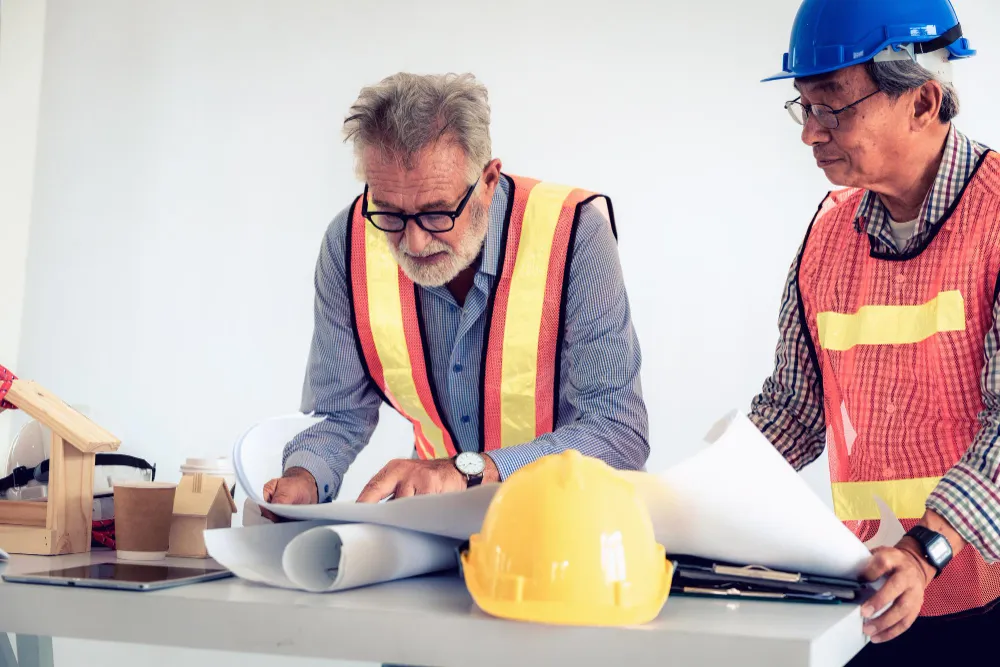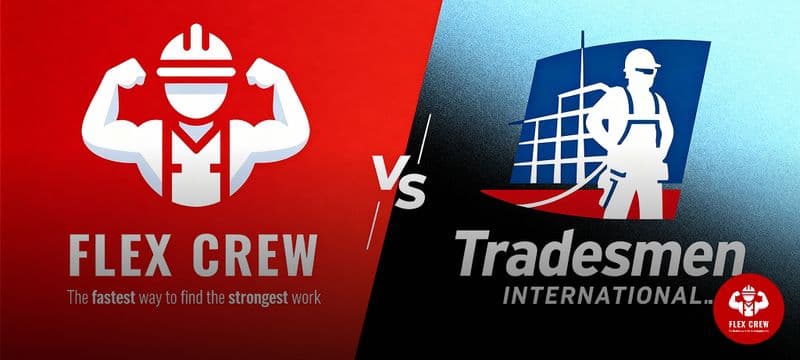The construction industry faces a critical challenge that's reshaping the entire sector. With more than 22% of construction workersover 55 and baby boomers retiring at a rate of 10,000 daily, companies across America are scrambling to adapt their workforce strategies.
If you're managing construction crews, you've probably noticed the shift. Your most experienced workers are talking about retirement, while finding skilled replacements gets harder each year. The aging workforce isn't just a future problem – it's happening right now on your job sites.
What the Numbers Mean for Your Business
Let's talk straight numbers. The median age of construction workers hit 42.5 years in 2024, up from 40.5 just seven years ago. That might not sound dramatic, but here's what it means for your bottom line:
Financial Impact You Can't Ignore:
- Worker compensation claims cost 70% more for employees over 55
- Finding replacement workers costs an average of $15,000 per skilled position
- Projects take 20-30% longer when experienced crews are short-staffed
The aging workforce challenge hits construction harder than other industries because our work demands physical strength, endurance, and years of hands-on experience. Unlike office jobs where someone can work productively into their 70s, construction workers face real physical limitations as they age.
Construction companies lose an average of 2.3 experienced workers for every new hire they bring on. The math simply doesn't work. When your 60-year-old master electrician retires, you can't replace his 35 years of experience overnight.

Age Bias: Your Hidden Talent Problem
Here's an uncomfortable truth: 90% of workers over 50 believe age discrimination exists in their workplace. In construction, this bias shows up in subtle but costly ways.
Where Age Bias Hurts Your Business:
- Passing over qualified older candidates during hiring
- Assuming older workers can't learn new technology or methods
- Excluding experienced workers from training opportunities
- Creating job descriptions that favor younger applicants
Beyond legal risks, age bias shrinks your talent pool when you need it most. Companies that eliminate age barriers report 40% better retention rates and access to workers with decades of specialized skills.
Strategy 1: Flexible Work Options
78% of workers over 50 want more flexible working hours, but construction has been slow to adapt. Here's how smart companies are making it work:
Phased Retirement Programs: Allow experienced workers to reduce hours gradually while keeping institutional knowledge on-site longer. This creates mentorship opportunities for younger workers and reduces sudden knowledge gaps from abrupt retirements.
Flexible Scheduling Solutions: Offer 4-day work weeks for senior workers, allow earlier start times to avoid extreme heat, and provide project-based work for retirees willing to return.
Turner Construction implemented a "wisdom worker" program allowing retired superintendents to work 20-hour weeks on complex projects. Result: 85% fewer schedule delays and 60% reduction in costly rework.
Strategy 2: Health Programs for Age-Diverse Teams
75% of workers over 50 have chronic health conditions, making targeted wellness programs essential for the aging workforce.
Cost-Effective Health Accommodations:
- Ergonomic tool programs reducing repetitive strain
- On-site physical therapy for injury prevention
- Flexible break schedules for medication management
- Modified duties for workers with physical limitations
Ergonomic Workplace Modifications: Invest in lift-assist equipment for heavy materials, anti-fatigue mats at standing work stations, adjustable height work surfaces, and improved lighting for detailed tasks.
The ROI is clear: Companies investing in ergonomic improvements see 30% fewer worker compensation claims and 25% higher productivity from their aging workforce.
Strategy 3: Technology Training That Works
Only 38% of workers over 45 participated in training in the past three years, but this isn't because they can't learn – it's because training programs aren't designed for them.
Effective Training Approaches: Start with basic smartphone apps before moving to complex software. Use peer mentoring instead of classroom-style training. Focus on tools that solve real problems they face daily, and provide written instructions alongside verbal training.
Research shows older workers have 85% completion rates for relevant training programs, compared to 62% for younger workers. They're also 40% more likely to share knowledge with teammates.
Strategy 4: Building Multi-Generational Teams
No difference exists in productivity between older and younger workers, but mixing generations strategically creates powerhouse teams.
Proven Team Structures:
- Pair experienced workers with tech-savvy younger ones
- Create "skill swap" programs where knowledge flows both ways
- Assign older workers as project mentors, not just laborers
- Use reverse mentoring for new technology adoption
Address communication style differences upfront, set clear expectations for all team members, and focus on shared goals rather than generational differences.
Strategy 5: Age-Inclusive Hiring
Your job applications might be accidentally screening out qualified candidates before you even meet them.
Simple Changes, Big Impact: Remove graduation dates from application requirements, focus job descriptions on skills rather than energy levels, use age-neutral language in postings, and conduct skills-based interviews.
Onboarding Adjustments: Provide longer adjustment periods for new technology, assign buddy systems with peer mentors, and focus on transferable skills from previous experience.

Strategy 6: Knowledge Transfer Systems
Preventing "brain drain" requires systematic approaches to capturing and transferring decades of experience.
Documentation Protocols: Video record complex procedures with experienced workers, create mentorship programs pairing seniors with juniors, develop detailed process checklists for specialized tasks, and establish regular knowledge-sharing meetings.
Phased Retirement Programs: Create gradual transitions from full-time to part-time, consultant roles for recent retirees, project-based work for specialized expertise, and training responsibilities for experienced workers.
Strategy 7: Legal Compliance
Age discrimination lawsuits cost construction companies an average of $150,000 per case, not including reputation damage.
Essential Protections: Document all hiring and firing decisions clearly, train supervisors on age discrimination laws, review job requirements for actual necessity, and maintain consistent performance standards across all ages.
Measuring Success
Track these key metrics to gauge your aging workforce management:
Retention Metrics:
- Turnover rates by age group
- Average tenure before retirement
- Knowledge transfer completion rates
- Training program success rates
Safety and Productivity:
- Injury rates across age groups
- Project completion times
- Quality scores by team composition
- Worker satisfaction surveys
The Bottom Line
The aging workforce isn't going away – it's accelerating. Construction companies that adapt now will have competitive advantages in talent retention, knowledge preservation, and project quality.
Smart workforce management means seeing older workers as assets, not liabilities. Their experience, reliability, and mentorship capabilities often outweigh physical limitations when you provide the right support systems.
Start with one strategy that fits your current challenges. Whether it's flexible scheduling, better health programs, or improved training, small changes can yield significant results in retaining your most valuable workers.
Frequently Asked Questions
Q: What age is considered "aging workforce" in construction?
A: Most industry experts define the aging workforce as workers 50 and older, though some use 55 as the threshold. In construction, physical demands make age considerations relevant earlier than office-based industries.
Q: How much does age discrimination cost employers?
A: Age discrimination lawsuits average $150,000 per case for construction companies, plus lost productivity, reputation damage, and reduced talent pool access.
Q: What are the most effective flexible work options for older construction workers?
A: Phased retirement programs, 4-day work weeks, project-based consulting roles, and flexible start times show the highest success rates for retaining experienced workers.
Q: How do I train older workers on new technology?
A: Use peer mentoring, focus on practical applications, provide written instructions, and allow longer learning periods. Success rates increase when training solves real problems workers face daily.
Q: What legal protections exist for older workers?
A: The Age Discrimination in Employment Act (ADEA) protects workers 40 and older from hiring, firing, promotion, and training discrimination. State laws may provide additional protections.
Q: How can I create age-inclusive job postings?
A: Remove graduation dates, avoid "energetic" or "digital native" language, focus on skills over cultural fit, and emphasize growth opportunities for all employees.
Q: What's the ROI of investing in aging workforce programs?
A: Companies report 30% reduction in worker compensation claims, 40% better retention rates, 25% higher productivity, and significant savings in replacement training costs.
Q: How do I handle conflicts between different generations?
A: Address communication differences directly, focus on shared project goals, create structured mentoring programs, and celebrate both innovation and experience equally.



